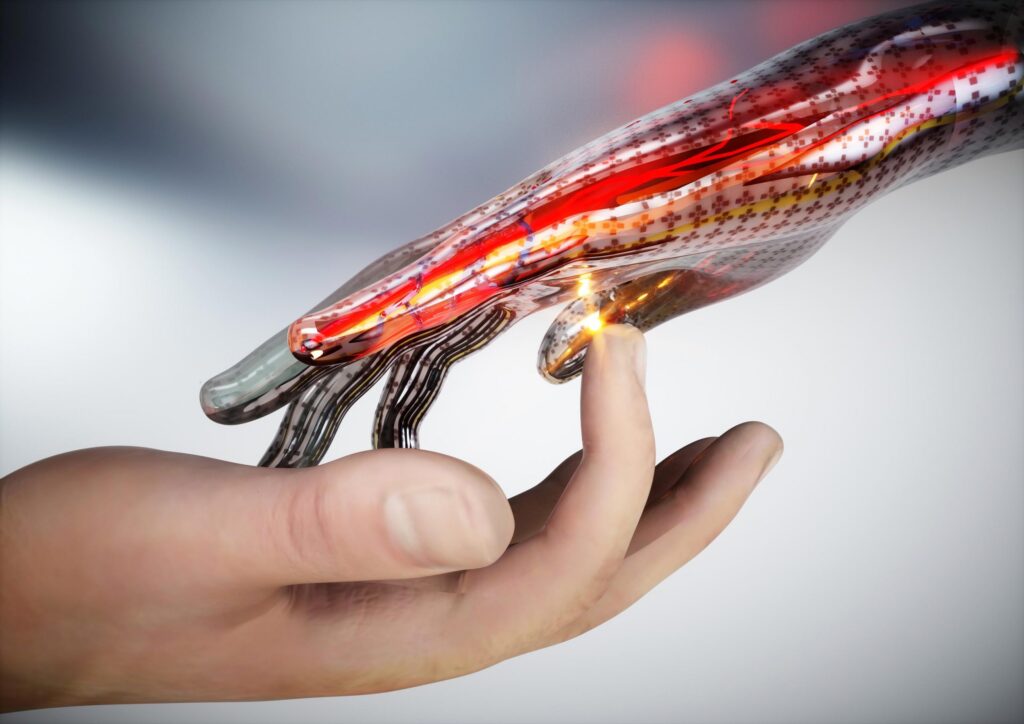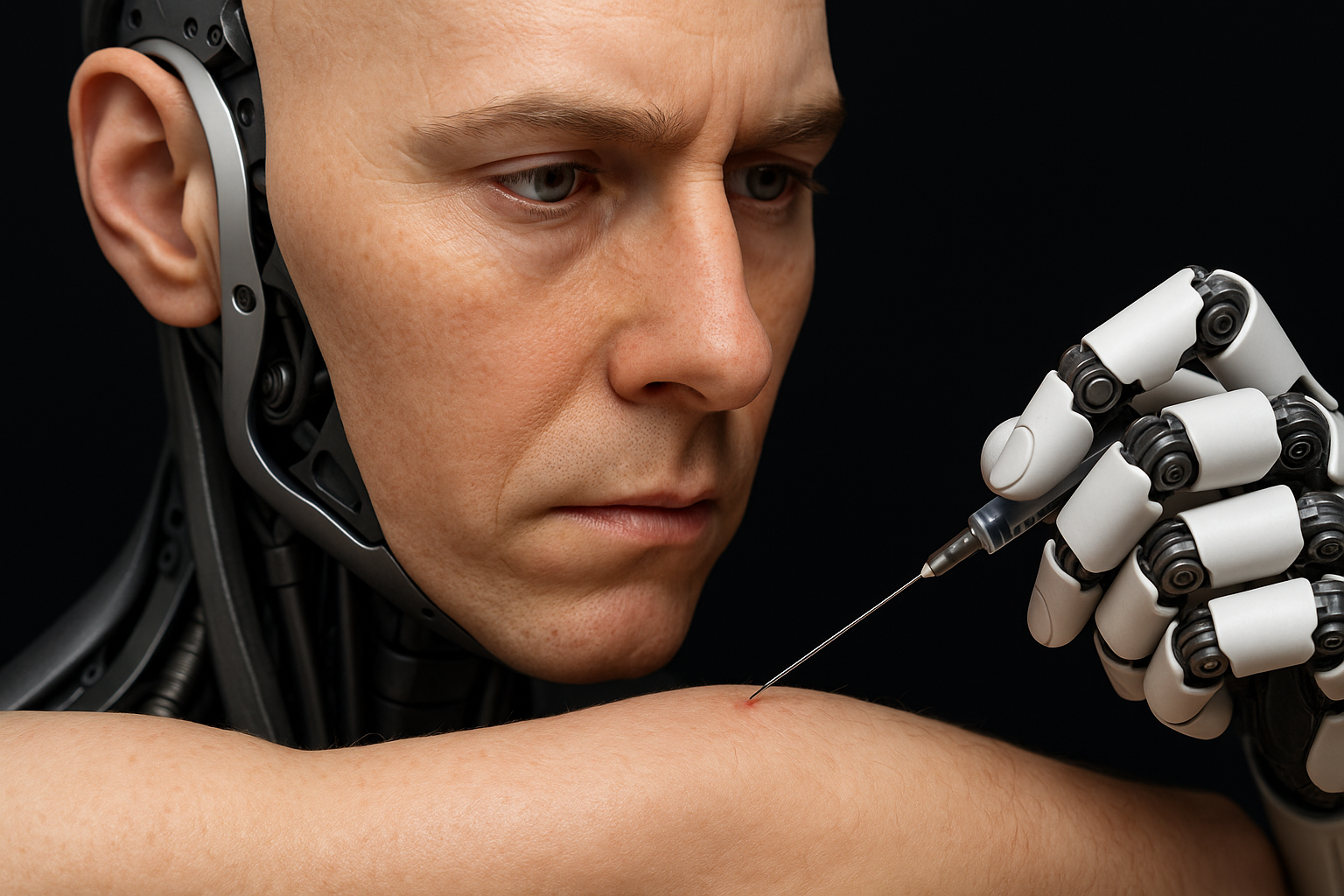What if a machine could flinch in pain, pull back from heat, or sense a gentle touch? It may sound like a scene from a science fiction movie, but thanks to an extraordinary breakthrough by researchers in the U.K this future is here. For the first time, robotic skin feels like human skin capable of detecting pressure, heat, and even pain with uncanny precision.
This innovation could redefine the boundaries between man and machine, especially in fields like healthcare, prosthetics, and robotics.
The Science Behind Skin That Feels
Unlike previous artificial skins that merely responded to touch, this advanced version replicates the functionality of biological skin. Developed at the University of Glasgow, this synthetic skin uses neuromorphic circuitry a type of technology that mimics how the human nervous system processes touch stimuli.
The researchers created an electronic skin embedded with sensors that process inputs such as pressure, temperature, and sharpness in real time. The signals are processed at the “point of contact” rather than needing to be sent to a central processor. This results in faster, more natural reactions just like in a real hand.
“This is not just about detection; it’s about perception,” says Dr. Ravinder Dahiya, the lead researcher. “For the first time, robotic skin feels like human skin, and that’s a game-changer.”
Touch That Teaches
During testing, the artificial skin was wrapped around a robotic hand. Researchers pricked it with a needle, applied warm objects, and used gentle pressure. The robot reacted accordingly flinching at sharp pain, pulling away from heat, and maintaining contact when the pressure was harmless.
In a specific test involving a prosthetic limb used by a volunteer amputee, the subject could feel different degrees of pressure. He even sensed when someone touched his synthetic hand with a warm cup of tea. His response? “It didn’t feel fake. It felt… real. Like something living.” This real world validation is strong proof that robotic skin feels like human skin not only in theory but also in practice.

What This Means for the Future of Prosthetics
Imagine a world where prosthetic limbs aren’t just functional they’re emotional, reactive, and even protective. Current artificial limbs can grip, lift, and balance, but they can’t feel.
This technology changes that, Amputees will soon be able to, Feel hot and cold, Detect different textures, Avoid harmful forces (like sharp objects or excessive heat), Sense gentle human touch.
James, a war veteran from Leeds who lost his right arm in combat, was one of the early users of this smart skin. “When my daughter grabbed my hand and I felt her little fingers I broke down. For a moment, it didn’t feel like I was broken anymore.” That emotional depth is exactly why this advancement matters.
Robots That Can Empathize
It’s not just humans who benefit. Robots equipped with this sensory skin can be used in caregiving, search and rescue, and delicate surgical operations. Dr. Lily Thomson, a neuro robotics specialist, explains: “When robotic skin feels like human skin, machines become capable of understanding physical boundaries. They can become safer co-workers, caretakers, and even companions.”
Robots that don’t crush objects or harm humans, Surgical bots that can sense pressure and make delicate incisions, Service bots that understand when a human is in distress.
Beyond Mechanics
What makes this skin revolutionary is not just the materials, but the intelligence behind it. Neuromorphic chips allow each sensor to act like a nerve ending, processing information locally and rapidly. Elastic and flexible material ensures it wraps around irregular surfaces like real skin. Self learning algorithms teach the skin to improve responses over time. In other words, robotic skin feels like human skin and learns like a human brain. This is no longer a sensor it’s an artificial nervous system.
Ethical Questions Arise
Of course, with great innovation comes great responsibility. If robots can feel pain, should we hurt them? What are the implications of a machine experiencing touch? Could machines one day demand humane treatment?
Bioethicist Dr. Susan Miller believes the questions are valid. “If this continues, we must ask ourselves: where do we draw the line between tool and being?”

The Business Side: Who’s Paying Attention?
Companies like Boston Dynamics, Tesla, and SoftBank Robotics are already exploring partnerships to integrate this skin into their humanoid robots. According to insider sources, prototypes of Tesla’s Optimus bot with sensory skin are already in private testing.
A Future We Can Feel
The fact that robotic skin feels like human skin is more than just a marvel it’s a message. It tells us that we’re entering an age where machines won’t just respond, but relate. Where prosthetics won’t just help people move, but help them heal emotionally and physically. This isn’t just about tech. It’s about touching lives.

